Installing a wood stove in a fireplace can be a rewarding project that adds warmth, charm, and efficiency to your home heating system. Whether you’re seeking to upgrade an existing fireplace or create a cozy focal point in your living space, proper installation is essential for safety and performance.
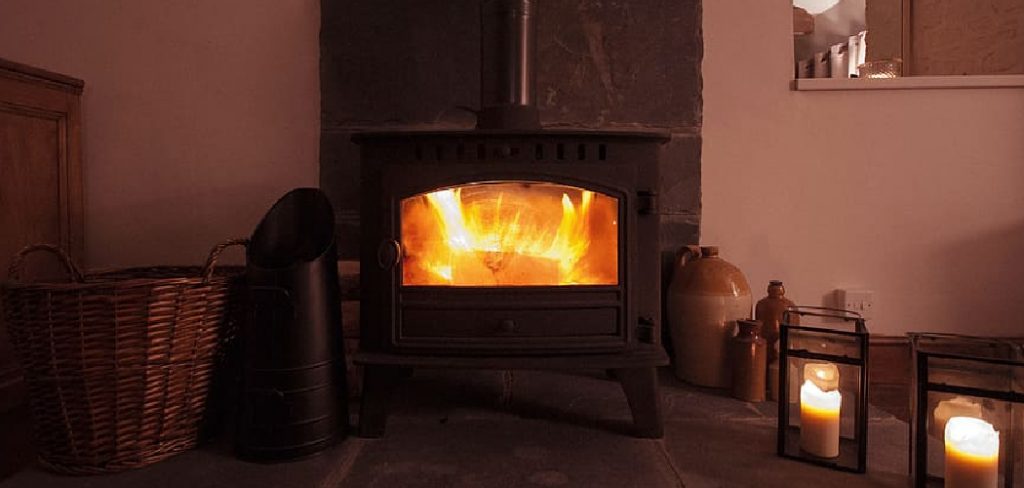
In this comprehensive guide, we’ll explore the step-by-step process of how to put a wood stove in a fireplace, covering everything from selecting the right stove to preparing the fireplace opening and ensuring proper ventilation.
By understanding the technical requirements and following best practices, you can confidently embark on this project and enjoy the comfort and ambiance of a wood-burning stove while maximizing energy efficiency and minimizing environmental impact. Let’s delve into the intricacies of installing a wood stove in a fireplace to create a warm and inviting atmosphere in your home.
Benefits of Using a Wood Stove
Wood stoves offer a plethora of advantages that go beyond just heating your home. First and foremost, they are known for their exceptional efficiency. Unlike traditional fireplaces that can lose a significant amount of heat up the chimney, wood stoves are designed to maximize the amount of heat that stays in the room. This can lead to significant savings on heating costs during the colder months.
Additionally, wood stoves are environmentally friendly. They use renewable resources and the latest models are designed to burn wood more cleanly, reducing the amount of smoke and pollutants released into the atmosphere.
From an aesthetic standpoint, wood stoves add a timeless charm to any room, creating a cozy and inviting atmosphere that cannot be replicated by other heating methods. Lastly, there’s the undeniable appeal of the self-sufficiency that comes with using a wood stove, allowing homeowners to reduce their dependency on utility companies for heating needs.
Condition and Dimensions of Existing Fireplace
Before proceeding with installing a wood stove into your existing fireplace, it’s crucial to evaluate the condition and the dimensions of the fireplace opening. The integrity of the fireplace structure is paramount for safety and to ensure that it can support the installation and operation of a wood stove.
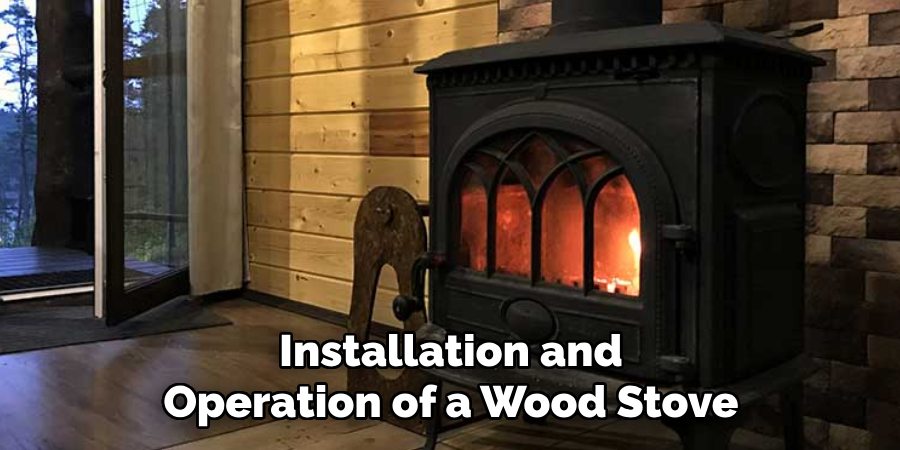
Start by inspecting the fireplace for any signs of damage, such as cracks in the firebrick, missing mortar, or deterioration of the hearthstone. These issues must be addressed prior to installation to ensure a secure environment for your wood stove.
Equally important are the dimensions of the fireplace opening. The size of the opening will directly influence the choice of wood stove size, as a proper fit is essential for optimal performance and safety. Measure the height, width, and depth of the opening accurately, and consider the rear clearance to the wall, as well as the clearance to the hearth in front.
Keep in mind that each wood stove model has specific clearance requirements that must be met to maintain safety and efficiency. Consulting with a professional installer or referring to the stove manufacturer’s installation guidelines can provide valuable insights during this assessment phase.
Determining if the Fireplace is Suitable
Determining the suitability of your fireplace for a wood stove installation is a critical step in the process. Not all fireplaces are created equal, and some may not be fit for conversion due to size, location, or structural issues. A crucial factor to consider is the material and condition of the chimney.
Masonry chimneys with a flue liner are generally considered suitable, but they must be inspected for blockages, cracks, or any signs of wear that could affect functionality and safety. Metal chimneys should be inspected for corrosion or damage, and it’s essential to ensure they are compatible with wood stove exhaust requirements.
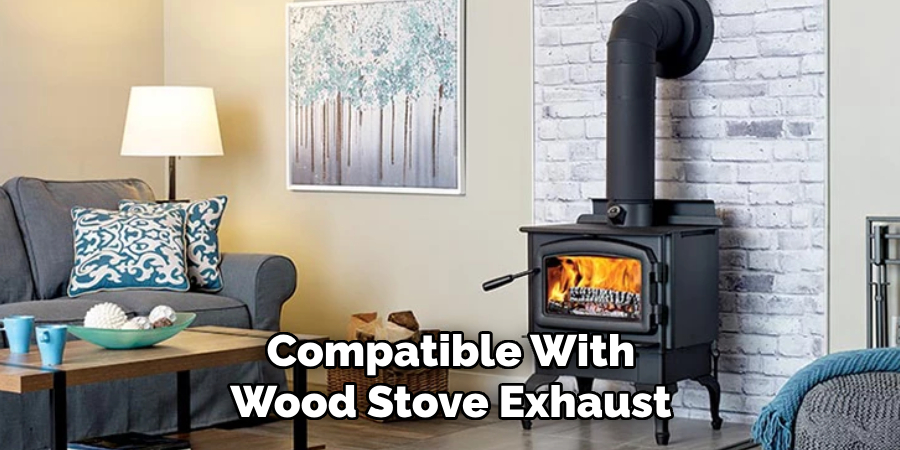
Another aspect to consider is the location and ventilation of the room. The room must have adequate ventilation to supply the stove with enough air to ensure efficient combustion. Additionally, the location should allow for the proper dispersal of heat throughout the space without creating hot spots or areas of discomfort.
It is also important to ensure that the installation complies with local building codes and regulations, which may specify requirements for chimney height, hearth extension, and stove clearances to combustibles. Consulting with a certified professional can help determine the fireplace’s suitability for a wood stove installation and guide you through making any necessary adjustments to proceed safely.
Researching Different Types and Sizes of Wood Stoves
Once you’ve assessed the condition and dimensions of your existing fireplace and determined its suitability for a wood stove installation, the next critical step is to research and select the appropriate wood stove. Wood stoves come in various types and sizes, each designed to meet specific heating requirements and aesthetic preferences.
Types of Wood Stoves
- Freestanding Wood Stoves: These stoves stand independently and can be installed within close proximity to the fireplace opening. They offer flexibility in placement and often feature viewing windows to enjoy the fire.
- Insert Wood Stoves: Designed to fit directly into the existing fireplace cavity, insert stoves are a popular choice for those looking to convert their traditional fireplace into a more efficient heating source.
Sizes of Wood Stoves
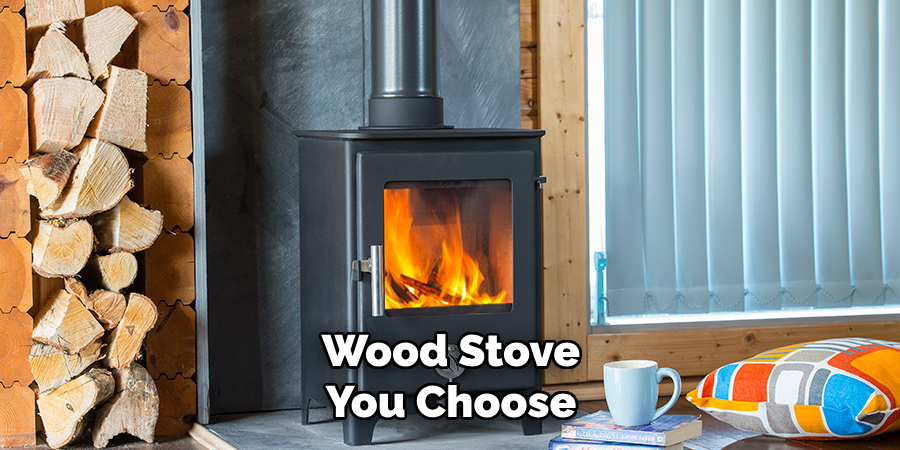
The size of the wood stove you choose should be based on the size of the space you intend to heat, measured in square feet. It’s essential to select a stove with an appropriate heat output (measured in BTUs) for your space to prevent underheating or overheating. Generally, larger rooms or open-plan areas require stoves with higher BTU ratings.
Keep in mind that the efficiency of a wood stove is just as important as its size. Modern wood stoves are designed to burn wood more completely, reducing emissions and increasing heat output. It’s worth considering models that have been certified by the Environmental Protection Agency (EPA) for their efficiency and low emissions.
When researching wood stoves, consider the following:
- Your Room’s Square Footage: This will help you narrow down the size of the stove required.
- EPA Certification: Look for stoves that are EPA certified for efficiency and environmental friendliness.
- Style and Aesthetics: Choose a stove that complements the interior design of your home.
- Budget: Prices vary widely based on size, type, and features. Determine your budget beforehand to streamline your search.
Consulting with a professional or visiting a showroom can provide valuable insights and allow you to view different models firsthand. Take your time to compare the features, efficiency, and aesthetics of various wood stoves to find the perfect fit for your home.
10 Methods How to Put a Wood Stove in A Fireplace
1. Assessing Fireplace Suitability:
Begin by assessing the suitability of your fireplace for a wood stove installation. Measure the dimensions of the fireplace opening, hearth, and chimney to ensure they meet the minimum requirements for the wood stove you plan to install. Additionally, check for any structural issues or damage that may need to be addressed before proceeding with the installation.
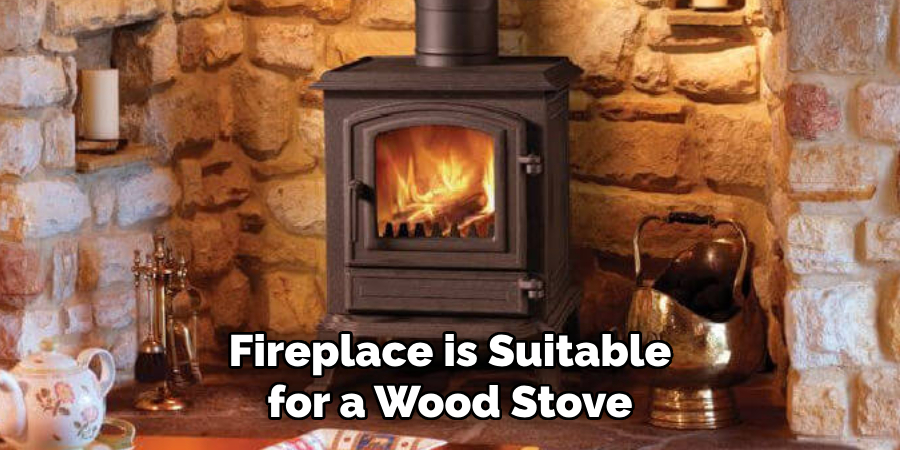
If your fireplace is suitable for a wood stove, the next step is to consider the clearance requirements. These requirements specify how far away from combustible materials (such as walls or furniture) the wood stove must be placed. The exact clearance distance will depend on the specific model of wood stove you are installing and may vary slightly based on local building codes.
2. Selecting the Right Wood Stove:
Choose a wood stove that is appropriately sized for your fireplace and heating needs. Consider factors such as stove size, heat output, efficiency rating, and aesthetic preferences. Look for wood stoves that are certified by reputable organizations such as the Environmental Protection Agency (EPA) or the Canadian Standards Association (CSA) to ensure they meet safety and performance standards.
When selecting a wood stove, it is important to consider the size of your fireplace and the space you want to heat. A stove that is too small will not generate enough heat for your needs, while one that is too large may cause overheating and increase fuel consumption. To determine the appropriate size, measure the square footage of your space and consult with a professional or refer to the manufacturer’s recommendations.
3. Preparing the Fireplace Opening:
Prepare the fireplace opening by cleaning out any debris, ash, or creosote buildup. Remove the existing fireplace grate, ash dump, and damper if present. Inspect the fireplace flue for obstructions and ensure it is clear and in good condition.
Depending on the condition of the fireplace, you may need to repair or replace the firebrick lining or mortar joints before installing the wood stove. Also, check the surrounding area for any combustible materials and remove them to prevent fire hazards.
Next, measure the fireplace opening to determine the appropriate size of the wood stove. Consider factors such as the type of wood you will be burning, your heating needs, and any local building codes or regulations. It is important to choose a properly sized wood stove to ensure efficient and safe operation.
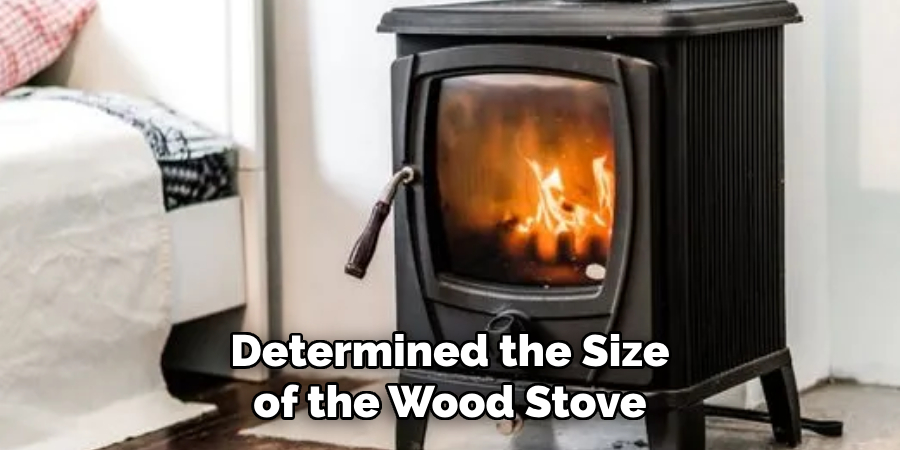
Once you have determined the size of the wood stove, you can begin to prepare the fireplace opening. Start by installing a non-combustible hearth pad in front of the fireplace to protect your flooring from heat and sparks.
4. Installing the Stovepipe:
Install the stovepipe to connect the wood stove to the chimney flue. Measure and cut the stovepipe to the appropriate length, ensuring a proper fit between the stove and the flue collar. Use stovepipe sections that are made of durable, heat-resistant materials such as stainless steel or galvanized steel. Secure the stovepipe to the stove and the flue collar using appropriate connectors, screws, or clamps, following the manufacturer’s instructions.
Once the stovepipe is installed, it is important to regularly inspect and maintain it to ensure proper functioning of the wood stove. This includes checking for any damage or clogs in the pipe, as well as making sure all connections are secure and leak-free. Regularly cleaning out any buildup of creosote or debris is also essential for safety and efficiency.
5. Creating a Secure Hearth Pad:
Create a secure hearth pad to protect the floor underneath the wood stove. Use non-combustible materials such as concrete, tile, or stone to construct the hearth pad, ensuring it extends a sufficient distance in front of and around the sides of the wood stove. The size and thickness of the hearth pad should comply with local building codes and safety regulations to provide adequate protection against heat transfer and fire hazards.
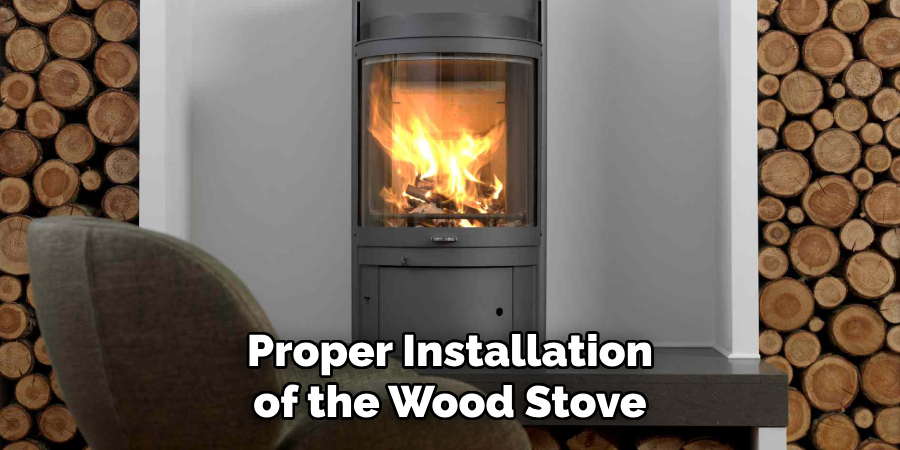
One important aspect to consider when creating a secure hearth pad is the proper installation of the wood stove. The hearth pad should be installed on a level surface and secured to the floor with screws or anchors to prevent movement or shifting. Additionally, make sure that there is enough clearance between the wood stove and the surrounding walls to avoid any potential fire hazards.
6. Sealing and Insulating Gaps:
Seal and insulate any gaps or openings around the wood stove to prevent heat loss and ensure proper ventilation. Use heat-resistant caulking or gasket material to seal gaps between the stove and the stovepipe, hearth pad, and fireplace opening. Install high-temperature insulation around the stovepipe to minimize heat transfer to combustible materials and improve stove efficiency.
In addition to sealing and insulating gaps around the wood stove, it is important to also regularly maintain and clean the stove. This includes removing any creosote buildup from the stovepipe and chimney, as well as cleaning out ash and debris from inside the stove.
Proper ventilation is crucial for safe operation of a wood stove. It is recommended to have a professional chimney sweep inspect and clean the chimney at least once a year. This will help prevent the buildup of creosote, which can lead to dangerous chimney fires.
7. Installing a Chimney Liner:
Consider installing a chimney liner to improve draft and safety in your wood stove installation. Chimney liners help to protect the chimney walls from heat and corrosion while enhancing airflow and preventing creosote buildup. Choose a chimney liner made of durable, heat-resistant materials such as stainless steel or aluminum, and ensure it is properly sized and installed according to manufacturer specifications and local building codes. In this guide, we will discuss the importance of chimney liners and provide step-by-step instructions on how to install one.
8. Adding Heat Shields and Fireproofing:
Enhance the safety and efficiency of your wood stove installation by adding heat shields and fireproofing materials to surrounding walls, floors, and ceilings. Install heat-resistant panels or shields made of materials such as sheet metal, ceramic, or fire-rated gypsum board behind and around the wood stove to protect combustible surfaces from heat exposure and reduce the risk of fire.
Fireproofing materials, such as fire-resistant insulation or cement board, can also be applied to the area around the wood stove to provide an added layer of protection. These materials can withstand high temperatures and prevent the spread of fire in case of accidental sparks or embers escaping the stove.
9. Ensuring Proper Ventilation:
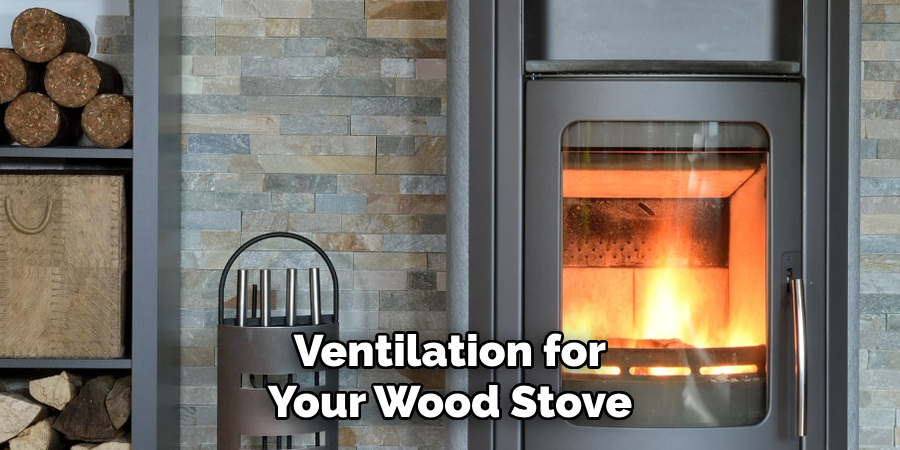
Ensure proper ventilation for your wood stove installation by providing adequate airflow and combustion air supply. Install vents or air intake ducts to supply fresh air to the wood stove combustion chamber and ensure proper draft and airflow through the chimney flue. Position vents and air intakes to minimize drafts and optimize stove performance while maintaining indoor air quality and safety.
In addition to proper ventilation, it is important to regularly clean and maintain your wood stove to ensure its optimal functioning and safety. This includes removing any built-up creosote from the chimney flue, cleaning the stove itself, and inspecting for any potential damage or wear. Regular maintenance not only ensures efficient operation of your wood stove but also reduces the risk of chimney fires and carbon monoxide buildup.
10. Testing and Certification:
Once the wood stove installation is complete, test the stove and chimney system to ensure they are functioning properly and meeting safety standards. Conduct a smoke test to check for proper draft and airflow through the chimney.
Verify that the wood stove is operating efficiently and safely by monitoring temperature levels, combustion performance, and smoke emissions. Obtain any necessary permits and certifications from local authorities to ensure compliance with building codes and regulations.
In addition to testing and certification, it is important to schedule regular maintenance for your wood stove and chimney. Regular cleaning of the chimney and inspection of the stove will help prevent any potential hazards or malfunctions. It is also recommended to have a professional chimney sweep clean your chimney at least once a year.
Conclusion
In conclusion, converting a fireplace into a wood stove can be a rewarding project that enhances both the functionality and efficiency of heating your home. By carefully assessing the fireplace, selecting the appropriate wood stove, and following proper installation procedures, homeowners can enjoy the warmth and ambiance of a wood stove while maximizing energy efficiency.
It’s crucial to prioritize safety throughout the installation process, including ensuring proper clearance, ventilation, and compliance with building codes and regulations. Regular maintenance and adherence to manufacturer’s guidelines for operation are essential for safe and efficient use of the wood stove. Thanks for reading, and we hope this has given you some inspiration on how to put a wood stove in a fireplace!
About the Author
Adrian Green, a lifelong woodworking enthusiast, shares his passion for the craft through The Woodenify Blog. With a foundation built on years of hands-on experience in his father’s woodworking shop, Adrian is dedicated to helping others learn and grow in the world of DIY woodworking. His approach to woodworking combines creativity, practicality, and a deep appreciation for the art of building with your own hands. Through his blog, he inspires individuals of all skill levels to embark on their own woodworking journeys, creating beautiful, functional pieces of furniture and décor.
Professional Focus
- Specializes in DIY woodworking projects, from furniture to home décor.
- Provides step-by-step guides and practical tutorials for woodworkers of all skill levels.
- Dedicated to helping readers build confidence and skill through easy-to-follow instructions and tips.
- Passionate about fostering a community of makers who can share, learn, and grow together.
Education History
- University of Craft and Design – Bachelor of Fine Arts (BFA) in Woodworking and Furniture Design
- Woodworking Apprenticeships – Extensive hands-on training with skilled craftsmen to refine carpentry and furniture making techniques.
- Online Courses & Masterclasses – Continued education in advanced woodworking techniques, design principles, and specialized tools
Expertise:
- DIY woodworking, carpentry, furniture making, and home décor projects.
- Creating accessible tutorials and guides for beginner to advanced woodworkers.
- Sharing the joys and satisfaction of woodworking, from raw materials to finished products.
